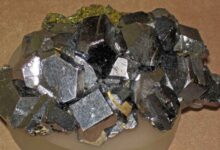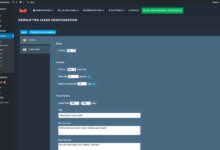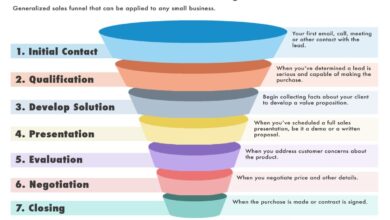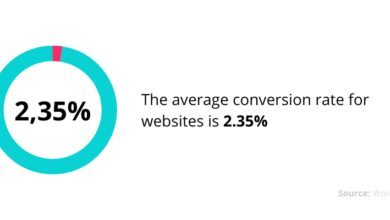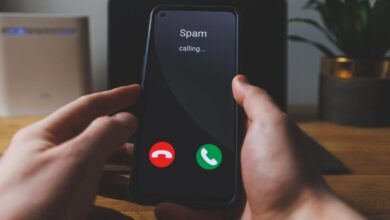Landing Page Secrets: 7 Proven Strategies to Skyrocket Conversions
Ever clicked on an ad and landed on a page that instantly grabbed your attention? That’s the magic of a well-crafted Landing Page. It’s not just a web page—it’s a conversion machine designed to turn visitors into customers.
What Exactly Is a Landing Page?

A Landing Page is a standalone web page, specifically created for a marketing or advertising campaign. Unlike regular website pages that have multiple goals and navigation options, a Landing Page focuses on one single objective: conversion. Whether it’s getting someone to sign up, download a guide, or make a purchase, every element on the page works toward that goal.
How a Landing Page Differs from a Homepage
Your homepage is like the front door of your website—welcoming, broad, and full of options. A Landing Page, on the other hand, is more like a private sales room. It’s tailored, focused, and free from distractions.
- Homepages have multiple CTAs and navigation menus.
- Landing Pages remove navigation to keep users focused.
- Landing Pages are often tied to specific campaigns (e.g., Google Ads, social media).
“A Landing Page is the bridge between your ad and your offer. If it’s weak, the entire campaign fails.” — Peep Laja, Founder of ConversionXL
Types of Landing Pages
Not all Landing Pages are built the same. Depending on your goal, you can choose from several types:
- Lead Generation Pages: Designed to collect user information like email addresses in exchange for a free resource (e.g., eBook, webinar).
- Capture Pages: A subset of lead gen pages, often minimalistic, focusing only on the email field and a CTA.
- Sales Pages: Long-form pages that sell a product or service directly, often used in e-commerce or SaaS.
- Click-Through Pages: Commonly used in e-commerce funnels to warm up users before sending them to a checkout page.
Each type serves a unique purpose, but they all share one thing: a clear, singular goal.
Why Your Business Needs a High-Converting Landing Page
If you’re running digital ads or email campaigns, sending traffic to your homepage is like inviting someone to a crowded mall and expecting them to find your store. A dedicated Landing Page acts like a guided tour, leading visitors exactly where you want them to go.
Improved Conversion Rates
According to HubSpot, businesses with 10-15 Landing Pages see a 55% increase in leads compared to those with fewer. When you remove distractions and align the message with the user’s intent, conversions naturally improve.
- Single focus = higher user engagement.
- Relevant messaging increases trust and action.
- Optimized design leads to faster decision-making.
Better Ad Performance and Lower CPC
Google Ads rewards relevance. When your ad copy, keyword, and Landing Page message are aligned, you get a higher Quality Score, which means lower cost-per-click (CPC) and better ad placement.
For example, if your ad says “Get Your Free SEO Guide,” the Landing Page should deliver exactly that—not a general blog or homepage. This relevance is critical for both user experience and algorithmic performance.
Accurate Campaign Tracking and Analytics
Using unique Landing Pages for each campaign allows you to track performance with precision. Tools like Google Analytics and Hotjar can show you how users interact with your page—where they click, scroll, or drop off.
- Measure conversion rates per campaign.
- Identify friction points in the user journey.
- Run A/B tests to optimize performance.
The Anatomy of a High-Converting Landing Page
Every successful Landing Page shares a common structure. While design and content may vary, the core components remain consistent. Let’s break down what makes a Landing Page work.
Compelling Headline and Subheadline
Your headline is the first thing visitors see. It must grab attention and communicate value instantly. A strong headline answers the question: “What’s in it for me?”
- Use power words like “Free,” “Proven,” “Instant,” or “Guaranteed.”
- Keep it under 10 words for maximum impact.
- Align it with the ad or link that brought the user here.
Example: “Get Your Free SEO Checklist – Rank #1 in 30 Days or Less!”
Engaging Hero Image or Video
Visuals are processed 60,000x faster than text. A high-quality image or short explainer video can instantly communicate your offer’s value.
- Use real product images or demo videos.
- Avoid generic stock photos.
- Include captions or overlays to reinforce the message.
According to Wyzowl, 87% of marketers say video has helped increase traffic, and 83% say it improves conversion rates.
Clear and Strong Call-to-Action (CTA)
Your CTA is the engine of your Landing Page. It should be impossible to miss and impossible to ignore.
- Use action-oriented language: “Download Now,” “Start Free Trial,” “Get Instant Access.”
- Make the button stand out with contrasting colors.
- Place CTAs above the fold and at natural decision points.
Tools like Optimizely and VWO allow you to test different CTA texts and designs to find the highest converting version.
Social Proof and Trust Signals
People trust people, not brands. Including testimonials, client logos, star ratings, or user counts builds credibility.
- Show real customer quotes with names and photos.
- Display trust badges (e.g., SSL secure, money-back guarantee).
- Mention media features or awards.
“92% of consumers hesitate to make a purchase without reading reviews first.” — BrightLocal
Minimal Form Fields for Lead Capture
The longer the form, the lower the conversion rate. Only ask for essential information. For a free guide, an email address is often enough.
- Use inline validation to reduce errors.
- Add privacy assurances (e.g., “We never spam”).
- Consider using progressive profiling for returning visitors.
A study by Unbounce found that reducing form fields from 11 to 4 increased conversions by 120%.
How to Build a Landing Page: Tools and Platforms
You don’t need to be a developer to create a high-converting Landing Page. Today’s tools make it easy for marketers, entrepreneurs, and small businesses to build professional pages in minutes.
Popular Landing Page Builders
Here are some of the most trusted platforms:
- Unbounce: Drag-and-drop builder with A/B testing and AI-powered copy suggestions. Great for marketers running ad campaigns.
- Leadpages: Offers templates, pop-ups, and integrations with email marketing tools like Mailchimp.
- Instapage: Known for collaboration features and post-click automation. Ideal for enterprise teams.
- ClickFunnels: More than just a Landing Page tool—it’s a full sales funnel builder, perfect for e-commerce and digital products.
- Carrd: Super simple and affordable for basic one-page sites, ideal for portfolios or MVPs.
Each platform offers free trials, so you can test before committing.
Integrations with Marketing Tools
A Landing Page is only as good as the ecosystem it connects to. Look for tools that integrate with:
- Email marketing platforms (Mailchimp, ConvertKit, ActiveCampaign).
- CRM systems (HubSpot, Salesforce).
- Analytics tools (Google Analytics, Facebook Pixel).
- Payment gateways (Stripe, PayPal) for sales pages.
These integrations ensure seamless data flow and automated follow-ups.
Mobile Optimization and Speed
Over 60% of web traffic comes from mobile devices. Your Landing Page must be responsive and fast.
- Test on multiple devices and screen sizes.
- Optimize images and minimize JavaScript.
- Aim for a load time under 2 seconds.
Google’s PageSpeed Insights tool can help you identify performance issues and fix them.
Advanced Landing Page Optimization Techniques
Once you have a working Landing Page, the real work begins: optimization. Even small tweaks can lead to massive gains in conversion rates.
A/B Testing for Continuous Improvement
A/B testing (or split testing) involves showing two versions of a page to different users and measuring which performs better.
- Test one element at a time: headlines, CTAs, images, or form length.
- Use statistical significance to validate results.
- Run tests for at least one full business cycle (e.g., 7–14 days).
For example, changing a CTA from “Learn More” to “Get My Free Trial” increased conversions by 27% for a SaaS company, according to ConversionXL.
Personalization Based on User Behavior
Personalized Landing Pages can increase conversions by up to 200%. Use data like:
- Geolocation (show local pricing or events).
- Referral source (customize message for Facebook vs. Google Ads).
- Past behavior (show returning visitors a special offer).
Tools like Optimizely and Marketo enable dynamic content based on user segments.
Using Heatmaps and Session Recordings
Tools like Hotjar and Crazy Egg show you how users interact with your page.
- Heatmaps reveal where users click, scroll, and ignore.
- Session recordings let you watch real user behavior.
- Identify drop-off points and confusing elements.
This qualitative data complements your analytics and guides optimization decisions.
Common Landing Page Mistakes to Avoid
Even experienced marketers make errors that kill conversions. Here are the most common pitfalls and how to fix them.
Too Many Distractions and Navigation Links
If your Landing Page has a full menu, footer links, or unrelated content, users will click away. The goal is to keep them focused on the CTA.
- Remove all unnecessary links.
- Disable header and footer navigation.
- Use a clean, minimalist design.
Vague or Weak Headlines
If your headline doesn’t instantly communicate value, users will bounce. Avoid generic phrases like “Welcome to Our Site.”
- Be specific: mention the benefit, time frame, or outcome.
- Use numbers: “5 Steps to Double Your Traffic.”
- Test emotional vs. rational appeals.
Ignoring Mobile Users
A page that looks great on desktop but breaks on mobile will lose half your audience.
- Use responsive templates.
- Test button sizes and form fields on touchscreens.
- Avoid pop-ups that are hard to close on mobile.
Real-World Landing Page Examples That Convert
Sometimes, the best way to learn is by studying what works. Here are three real examples of high-performing Landing Pages.
Dropbox’s Simple and Clear Offer
Dropbox’s early Landing Page was legendary for its simplicity. It featured:
- A clear headline: “Your stuff, everywhere you are.”
- A short explainer video.
- A single CTA: “Sign up for free.”
This focus helped them grow from 100,000 to 4 million users in 15 months.
HubSpot’s Free Tool Landing Page
HubSpot offers a free website grader tool. Their Landing Page:
- Promises instant value: “Get your free website report.”
- Uses a clean form with minimal fields.
- Displays trust badges and testimonials.
This page generates thousands of qualified leads every month.
Shopify’s Free Trial Page
Shopify’s Landing Page for new users is a masterclass in conversion design:
- Strong headline: “Start your free trial today.”
- Benefits listed clearly: no credit card required, 24/7 support.
- Video testimonial from a real merchant.
It’s no surprise they power over 1.7 million businesses worldwide.
Future Trends in Landing Page Design and Strategy
The digital landscape is evolving fast. To stay ahead, you need to anticipate the next wave of Landing Page innovation.
AI-Powered Copy and Design Suggestions
AI tools like Jasper and Copy.ai can generate high-converting headlines and body copy in seconds. Platforms like Unbounce now offer AI-powered A/B testing suggestions.
- Generate multiple headline variations instantly.
- Optimize meta descriptions and CTAs.
- Personalize content based on audience segments.
AI won’t replace human creativity, but it will amplify it.
Interactive and Dynamic Content
Static pages are becoming outdated. Interactive elements like quizzes, calculators, and configurators boost engagement.
- A mortgage calculator for a financial service.
- A style quiz for an e-commerce brand.
- A ROI calculator for SaaS products.
According to Drift, interactive content generates twice as many conversions as passive content.
Voice Search and Accessibility Optimization
With the rise of smart speakers and voice assistants, Landing Pages must be optimized for voice search and accessibility.
- Use natural language in headlines and content.
- Ensure screen reader compatibility.
- Add alt text to images and transcripts to videos.
Inclusive design isn’t just ethical—it’s good business.
What is the main purpose of a Landing Page?
The main purpose of a Landing Page is to convert visitors into leads or customers by focusing on a single, specific goal—such as signing up, downloading, or purchasing—without distractions.
How do I make my Landing Page convert better?
Improve conversions by using a clear headline, strong CTA, social proof, minimal forms, mobile optimization, and A/B testing. Ensure your message matches the ad that brought the user there.
Do I need a Landing Page for every campaign?
Yes, using a unique Landing Page for each campaign improves relevance, tracking, and conversion rates. It allows you to tailor the message and design to the audience’s intent.
Can I build a Landing Page without coding?
Absolutely. Tools like Unbounce, Leadpages, and ClickFunnels offer drag-and-drop editors that let you create professional Landing Pages without any coding knowledge.
How long should a Landing Page be?
There’s no fixed length. It should be as long as needed to convince the visitor to convert. Some are short and simple; others are long-form sales pages. Focus on clarity and value, not word count.
Mastering the art of the Landing Page is no longer optional—it’s essential for any business that wants to thrive online. From understanding its core purpose to leveraging AI and interactive content, the strategies outlined here give you a complete roadmap to higher conversions. Whether you’re a startup, marketer, or entrepreneur, a well-optimized Landing Page can be your most powerful growth tool. Start building, testing, and refining today, and watch your results soar.
Further Reading:
